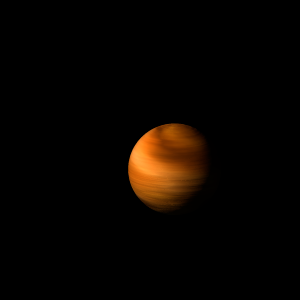|
|
Space Astro
|
Info for exoplanet "Chiyu Agyuka"
| Scientific (actual) data |
|---|
| Name | MOA-2009-BLG-266L b |
| Planet status | Confirmed |
| Planet mass | 0.0327 |
| Orbital period | 2780 |
| Semi major axis | 3.2 |
| Angular distance | 0.001053 |
| Discovered | 2010 |
| Updated | 2011-06-13 |
| Publication | Published in a refereed paper |
| Detection type | Microlensing |
| Star name | MOA-2009-BLG-266L |
| Right ascension | 267.03° |
| Declination | -35.01° |
| Star distance | 3040 |
| Star mass | 0.56 |
| Wikipedia article | MOA-2009-BLG-266L b |
Back
| |
| Fictional info (?) |
|---|
| Suggested name | Chiyu Agyuka |
| Planet type | Small cold gas planet |
|
| Atmosphere | Neon | 77% |
| Ammonium hydrosulfide (NH4SH) | 17% |
| Hydrogen | 2.9% |
| Water vapor | 1.7% |
| Hydrogen peroxide | 0.65% |
| Carbon monoxide | 1.6E-5% |
| Atmospheric pressure | 0.021 bar |
 |
| No known satellites |
| Google search for Chiyu agyuka |
|
Website by Joachim Michaelis
|
|
|
|